A simpler verification process for setting up and executing a workflow for reviewing and approving general journal entries is available in SAP S/4HANA.
The general journal entry verification process was offered as of SAP S/4HANA 1709 and is available only through SAP Fiori. You use three apps (see figure below), one for the requester to submit entries for verification and two for the reviewer to manage pending and submitted entries. Based on this functionality, SAP delivers a predefined, single-step approval workflow for verifying general ledger journal entries, but you can adjust it to your specific requirements.
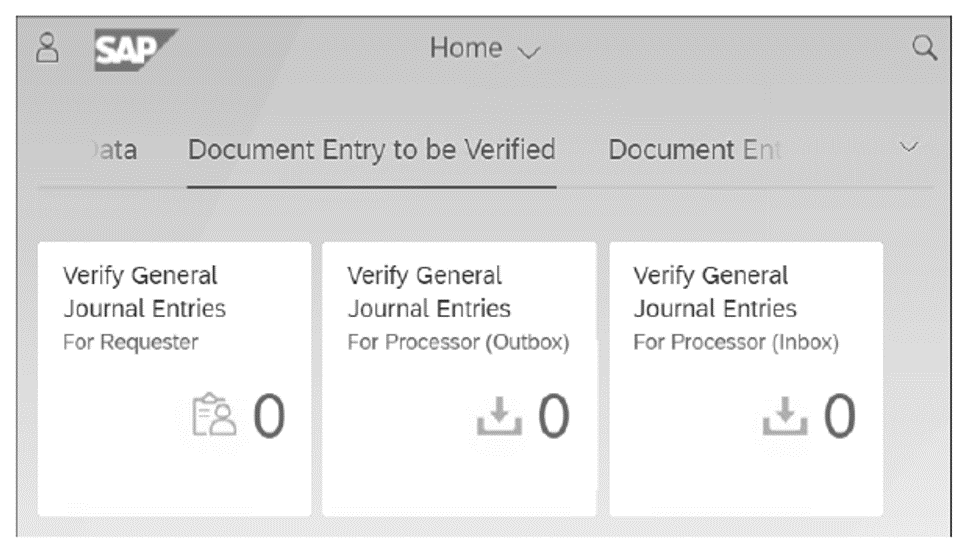
A simplified process diagram of the journal entry verification process is shown below.
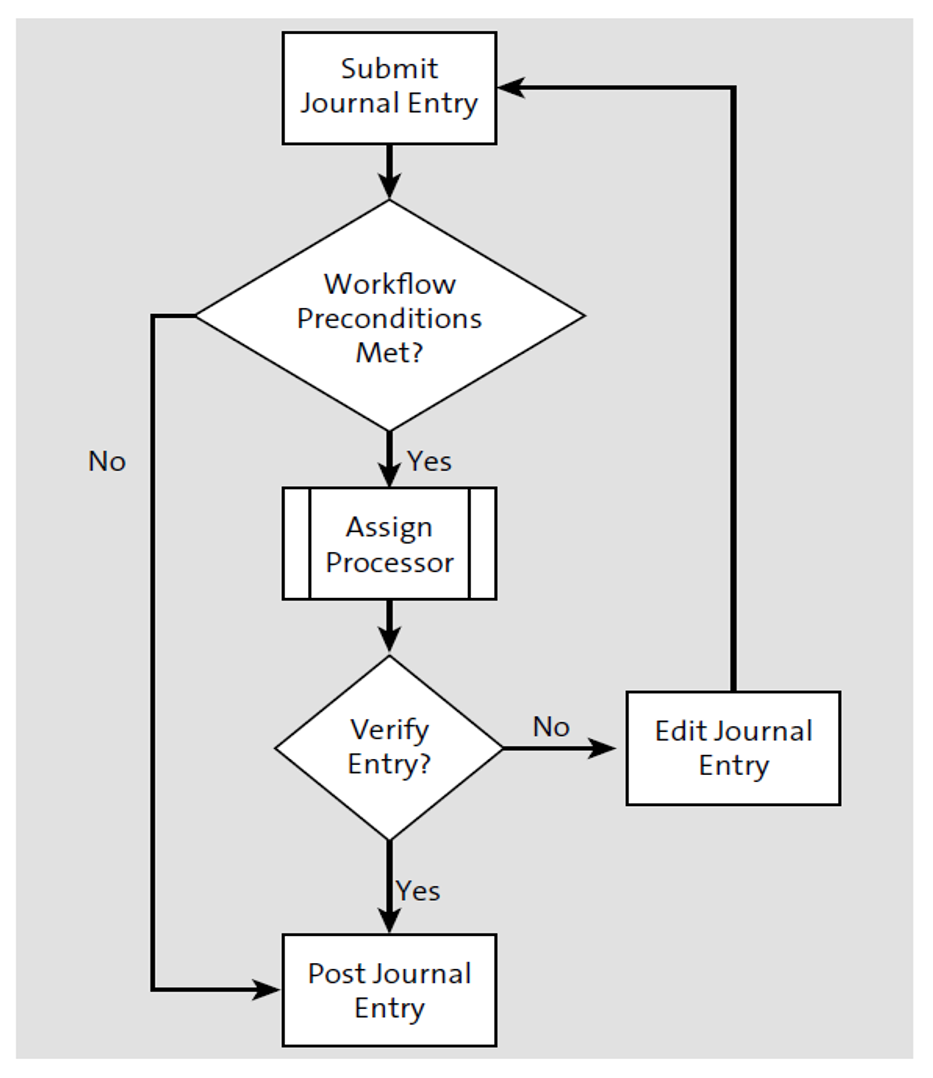
On a high level, you submit a general journal entry for review. The system reads the document details (e.g., company code, amount, and account assignments), and, if the workflow prerequisites are met, assigns a processor. The processor then reviews the submitted journal entry and either accepts it, in which case the journal entry is posted, or rejects it, in which case you must correct the document and resubmit it. The detailed process is analyzed in the following sections.
Verification Process
A requester will create and submit a journal entry with the Verify General Journal Entries – For Requester app (see figure below). This app is like the Post General Journal Entries app: you can create manual journal entries or upload them from a Microsoft Excel sheet.
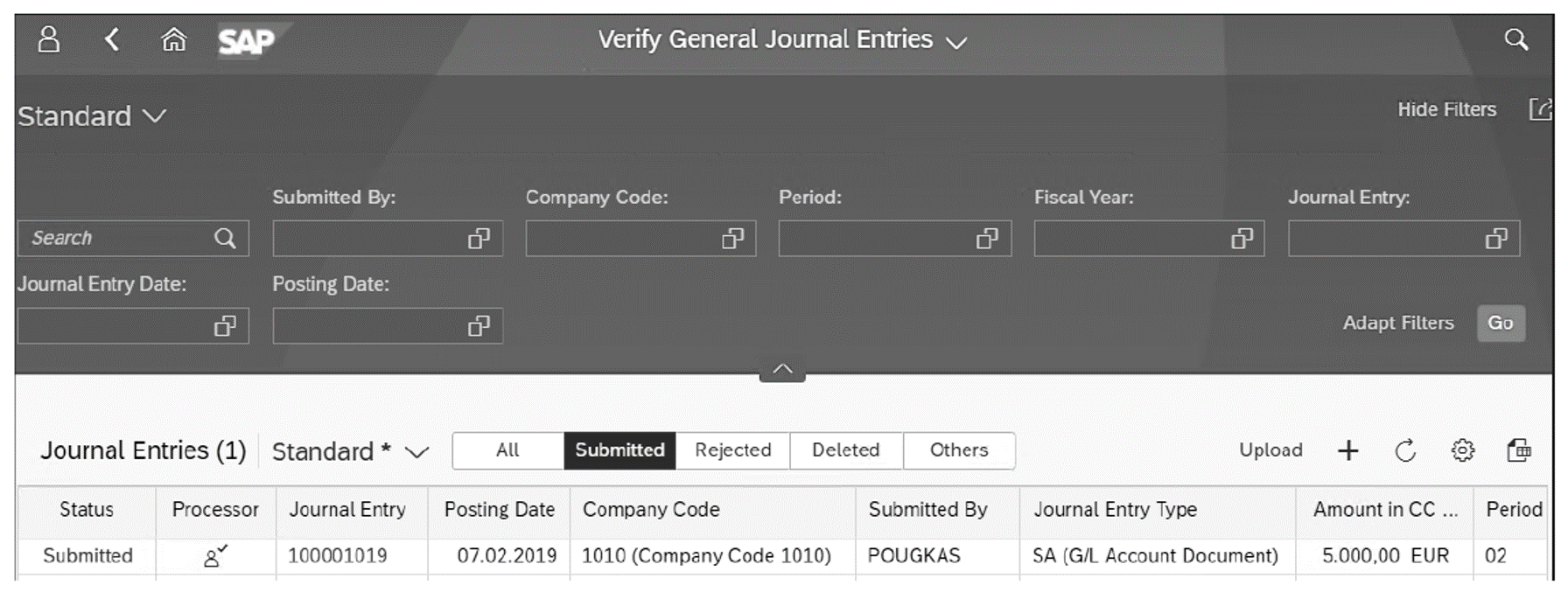
The system will check the journal entry against a set of preconfigured criteria (e.g., the amount) and determine the proper workflow processors (if any) to assign to the journal entry. The requester has access to view the status of the submitted journal entry as it’s being processed.
The request processor uses the Verify Journal Entries – For Processor app (see below) to review the requests and select an action for each:
- 0: The journal entry will be posted (if the entry is complete and correct).
- Reject: The requester must edit and resubmit the entry.
- Suspend: The document is put on hold for later processing at a time indicated by the processor.
The processor has two separate verification apps: an inbox and an outbox (see below). You use these to process journal entries depending on their status.
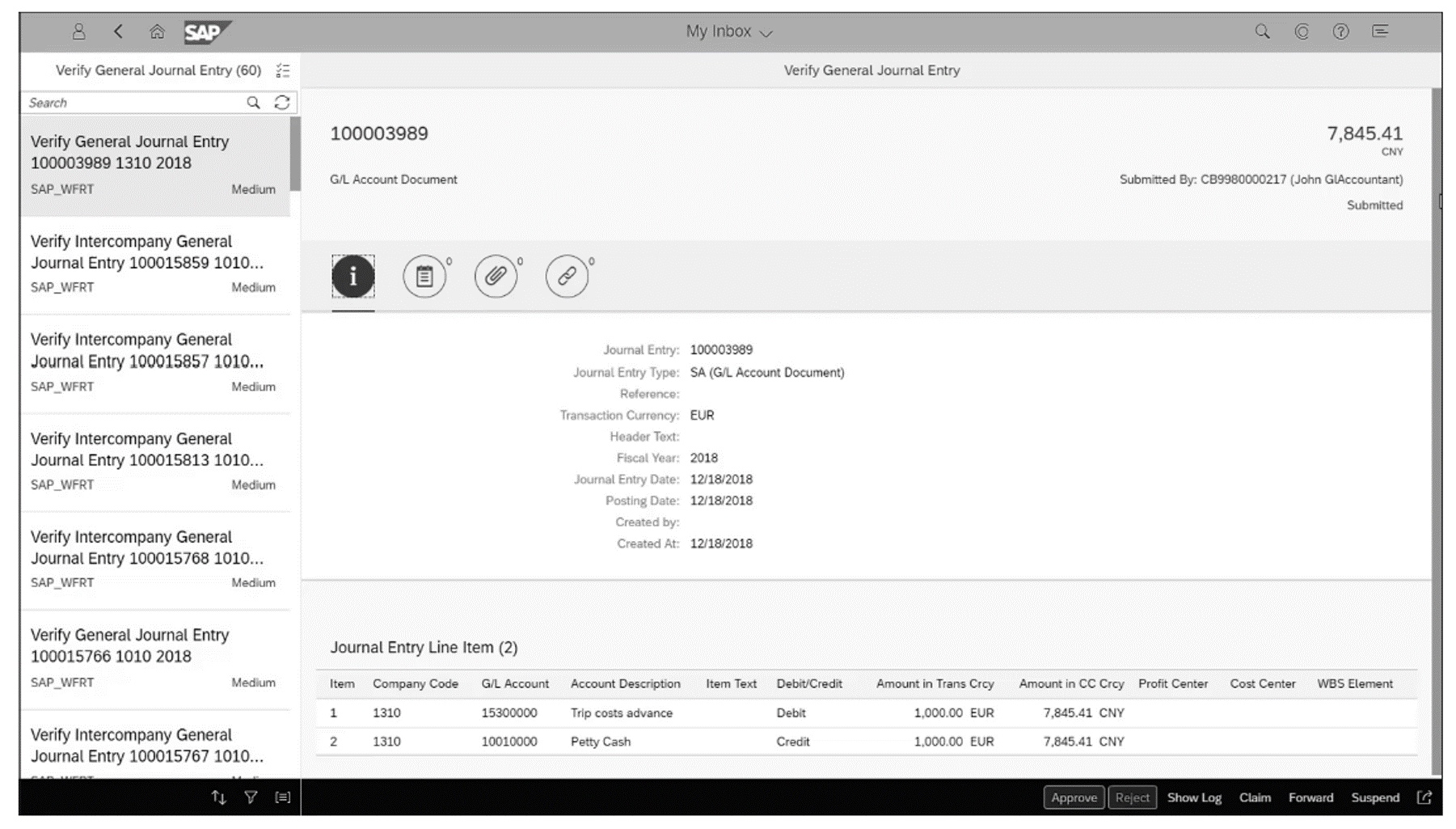
Workflow Configuration
There are two configuration apps for setting up the workflow for general journal entry verification.
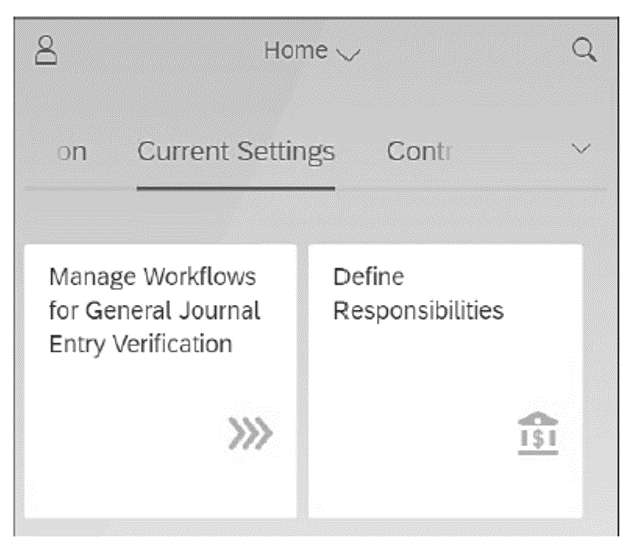
Manage Workflows for General Journal Entry Verification
This configuration app is used to set up the workflows that are active and the prerequisites that trigger the workflows.
Define Responsibilities
This app is used to assign users or groups of users to the defined workflows.
With the Manage Workflows for General Journal Entry Verification app, you define header information (shown in the figure below), such as the description, validity period, and preconditions for the application of the workflow.
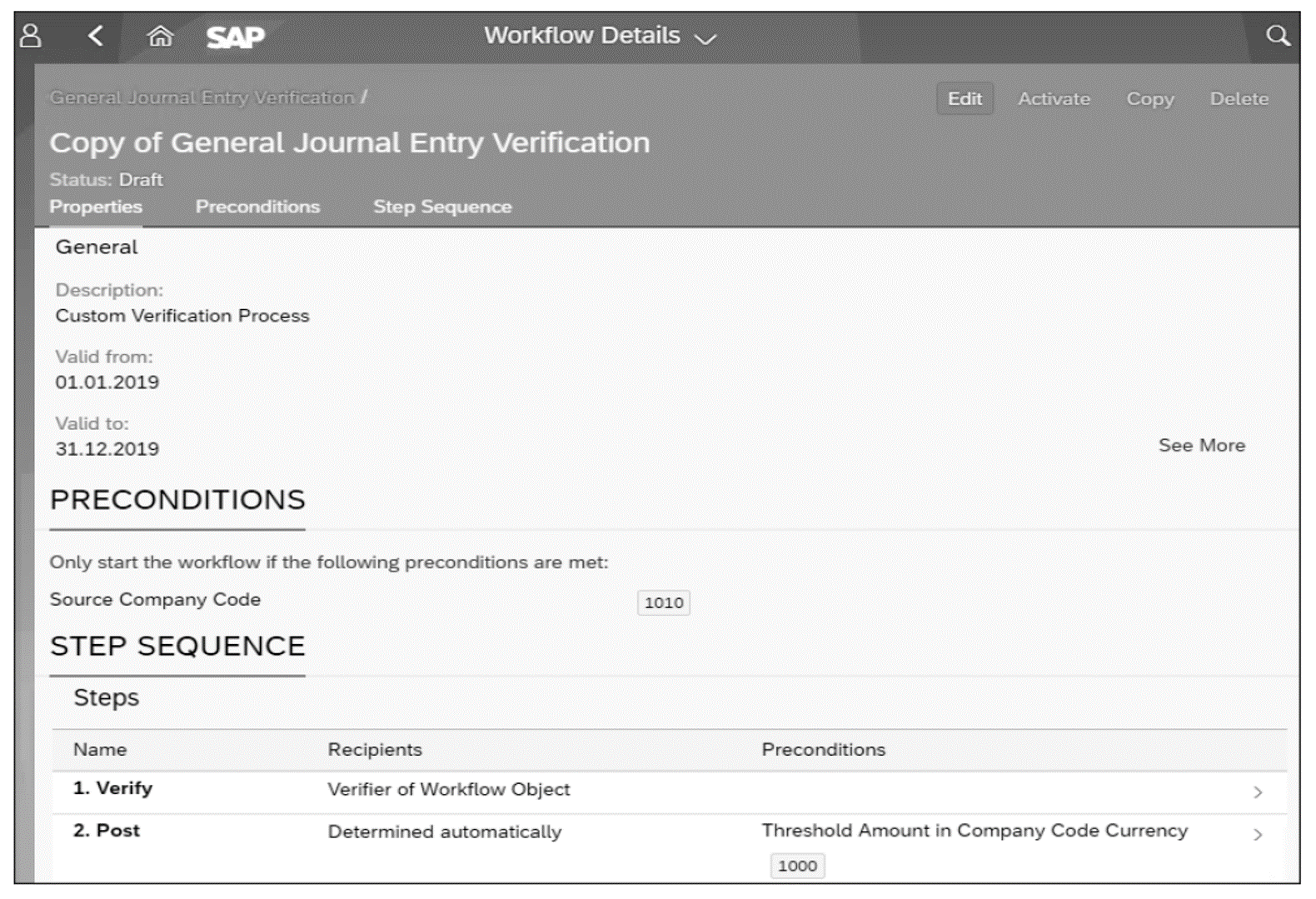
The workflow is only activated when the preconditions are met. The preconditions you can define are based on a combination of values for the following elements:
- Account group
- Threshold amount (in company code currency)
- Cost center
- Source company code
Then, you define the step sequence settings for the Verify (see below) and Post steps of the process. Here, you assign the rules for the approvers and preconditions, as well as control the exception handling. There is no reason to go into detail here; it’s sufficient to know that you can define multilevel workflows and different processors per various preconditions.
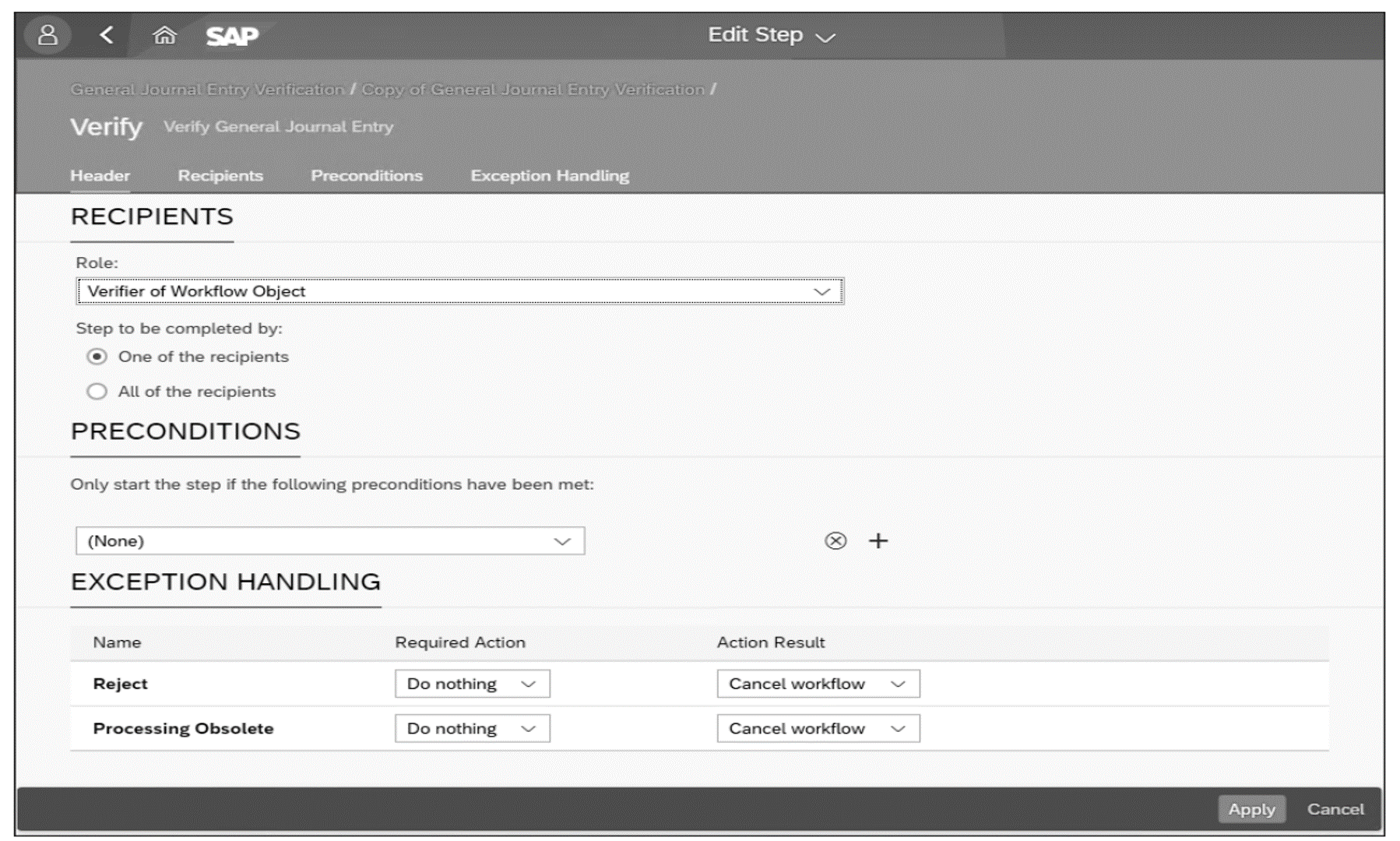
With the Define Responsibilities app, you define the responsibility specifications (first figure below) by setting a Priority (01 to 99) and assigning the amount ranges and company codes the responsibility is valid for. Then, in the same app, you assign the users or groups of users that are recipients and processors for the verification workflow (second figure).
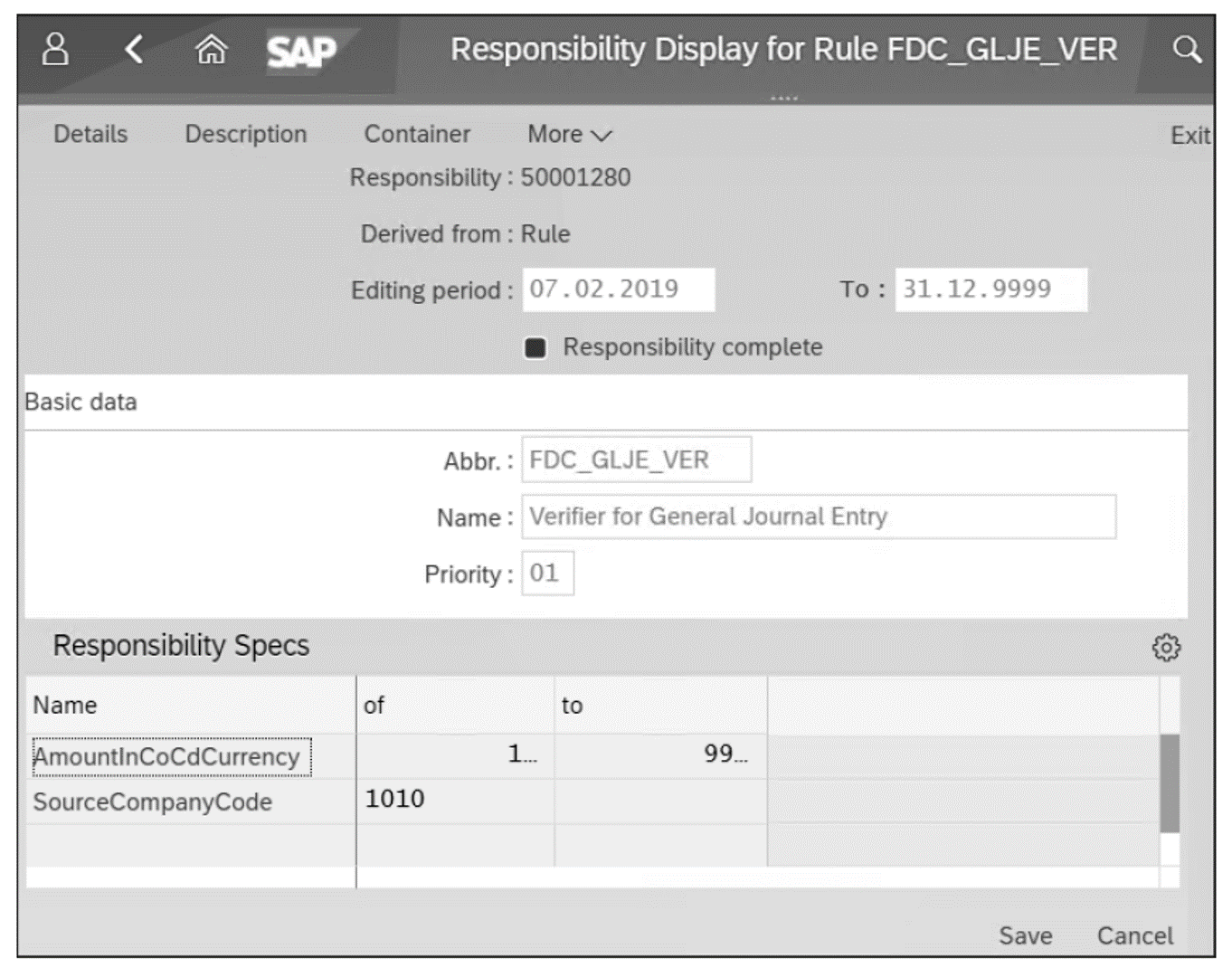
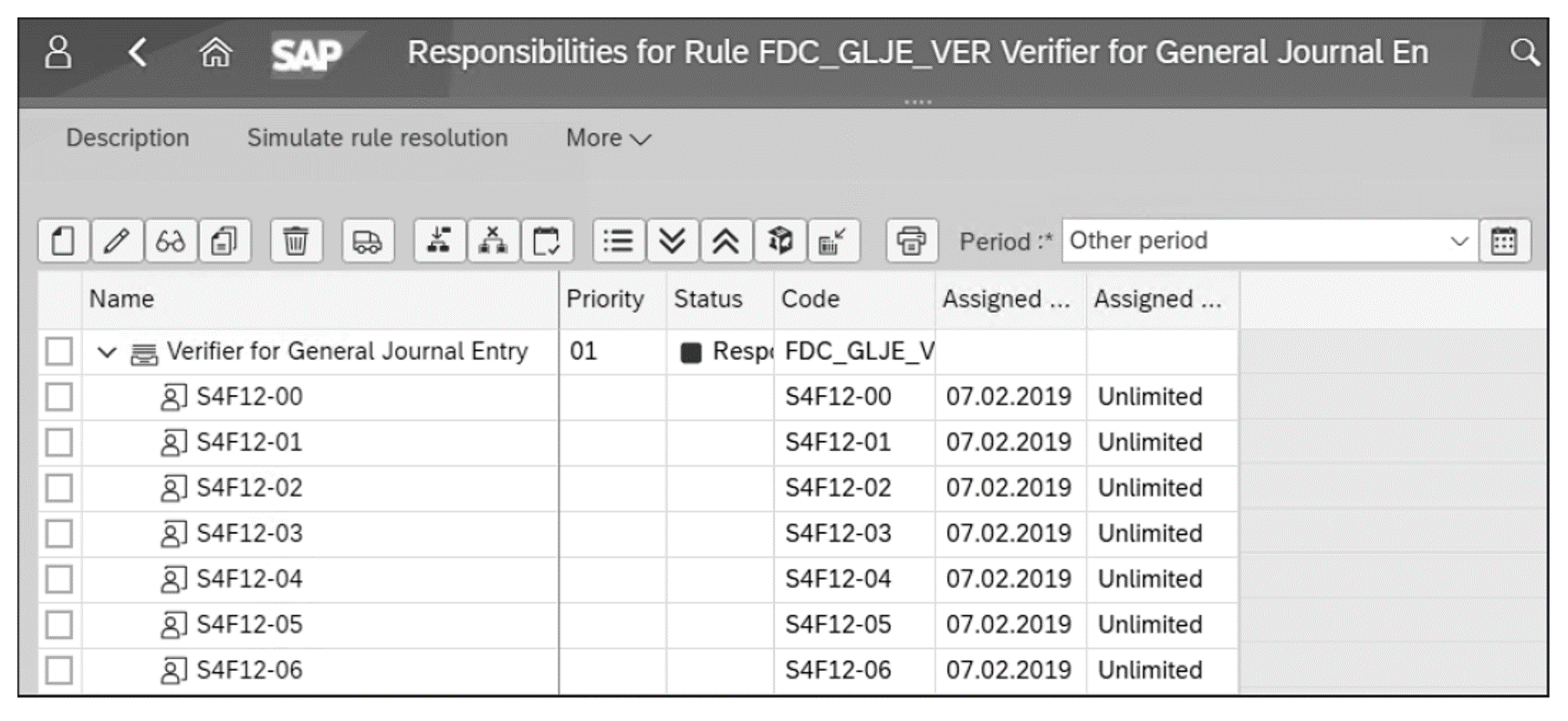
Tip: The SAP Training and Adoption course materials for SAP S/4HANA Finance 2020 don’t cover journal entry verification, but it’s an important topic to be aware of and it’s very possibly going to be included in future course and certification releases. To find out more, visit the SAP Help Portal for a complete guide to how to configure and use the general journal entry verification process and workflow: http://s-prs.co/485603.
Editor’s note: This post has been adapted from a section of the book SAP S/4HANA Financial Accounting Certification Guide: Application Associate Exam by Stefanos Pougkas.
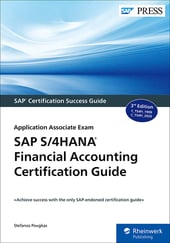


Comments